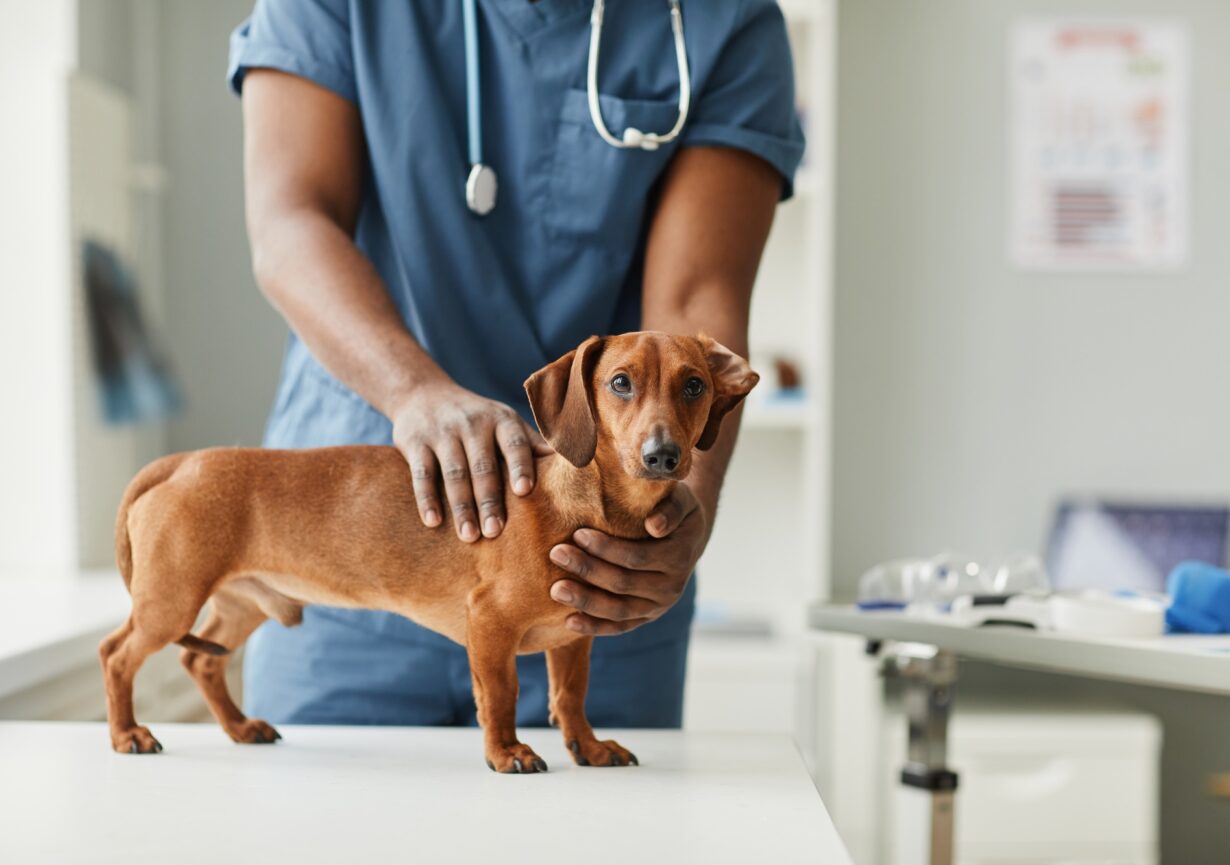Dachshunds are one of the most beloved small dog breeds, known for their long bodies and spunky personalities. However, their unique shape comes with a high risk of back problems, particularly intervertebral disc disease (IVDD), which can cause pain, mobility issues, and even paralysis. Understanding how to prevent these problems, recognize early warning signs, and use supportive gear effectively is essential to keeping your Dachshund healthy and happy.
This guide dives deep into how you can protect your furry friend’s back, identify problems early, and provide the right care to improve their quality of life.
1. Why Dachshunds Are Prone to Back Problems
Anatomy and Genetic Predisposition
The Dachshund’s long spine combined with short legs creates unique biomechanics that put extra stress on their vertebral discs. This structure makes their back more vulnerable to injury compared to other breeds. Many Dachshunds inherit a genetic predisposition to IVDD, a condition where discs degenerate or herniate, causing pain and nerve damage.
Because IVDD can develop gradually or suddenly, even young dogs can be affected. Knowing this predisposition helps owners be proactive in protecting their pets.
Common Causes of Back Injuries
Aside from genetics, certain behaviors and environmental factors increase the risk of back problems. Jumping off furniture, climbing stairs frequently, or obesity can add strain to the spine. Sudden trauma like falls or rough play can also trigger disc injury.
Being aware of these risks helps in modifying your Dachshund’s environment and routine to reduce strain and avoid injury.
2. Prevention: How to Protect Your Dachshund’s Back
Safe Handling and Activity Management
One of the best ways to protect your Dachshund’s spine is by limiting activities that cause excessive strain. Avoid letting your dog jump on or off high surfaces like beds or sofas. Use ramps or steps if your Dachshund needs access to furniture or cars.
Encourage gentle play and controlled exercise. Swimming is an excellent low-impact activity that strengthens muscles without stressing the back. Regular walks with careful pacing help maintain a healthy weight and muscle tone.
Maintaining Healthy Weight and Muscle Strength
Excess weight adds pressure to the spine, accelerating disc degeneration. Feeding a balanced diet and monitoring portion sizes are key. Regular vet checkups to track your dog’s weight and condition help catch any concerns early.
Strengthening core muscles through appropriate exercise supports spinal health. Consult your vet or a canine physiotherapist for tailored exercises to improve your Dachshund’s back support.
3. Recognizing Warning Signs of Back Problems
Changes in Mobility and Behavior
Early detection is crucial for effective treatment. Watch for signs like reluctance to jump or climb stairs, stiffness, or limping. Your Dachshund might show signs of pain, such as whimpering or sensitivity when touched along the spine.
Behavioral changes like withdrawal, irritability, or decreased appetite can also indicate discomfort or neurological issues.
Severe Symptoms to Watch For
If your Dachshund suddenly shows weakness in the hind legs, loss of coordination, or dragging paws, these are urgent warning signs. Incontinence or inability to control urination or defecation may indicate severe nerve damage.
If you notice any of these symptoms, seek veterinary care immediately. Early intervention can prevent permanent damage.
4. Supportive Gear to Protect and Assist Your Dachshund
Harnesses and Back Supports
Using a well-fitted harness instead of a collar helps reduce neck and back strain during walks. Some specialized back braces or supports designed for dogs can provide additional spinal stability, especially for those recovering from injury.
Always consult your vet before using any supportive gear to ensure it’s appropriate for your Dachshund’s condition.
Ramps, Steps, and Orthopedic Beds
Installing ramps or stairs helps your Dachshund avoid risky jumps, protecting their back. Orthopedic dog beds with memory foam offer excellent support, reducing pressure on joints and the spine during rest.
These modifications not only improve comfort but can slow the progression of spinal issues.
5. Treatment Options and Rehabilitation
Veterinary Care and Medical Treatments
If your Dachshund develops back problems, early veterinary diagnosis is critical. Treatment options range from anti-inflammatory medications and pain relief to surgery in severe cases. Your vet may recommend cage rest and restricted activity to allow healing.
Follow-up visits and imaging tests help monitor progress and adjust treatment.
Physical Therapy and Hydrotherapy
Rehabilitation therapies, including physical therapy and hydrotherapy, can greatly improve mobility and quality of life. Controlled exercises help rebuild muscle strength and reduce pain without stressing the spine.
Working with a certified canine rehab specialist provides personalized care to speed recovery and prevent further injury.
6. Caring for Your Dachshund’s Mental Well-being
Managing Stress During Recovery
Back problems can be frustrating and painful for your Dachshund. Ensuring a calm environment, gentle handling, and plenty of affection helps reduce anxiety during treatment and recovery.
Providing toys, gentle play, and positive reinforcement encourages mental engagement without overexertion.
Maintaining Social Interaction
Social interaction with humans and other pets boosts your dog’s mood and emotional health. Even if physical activity is limited, short supervised play sessions or cuddling can maintain their happiness and reduce feelings of isolation.
A balanced mental and physical care approach improves overall healing.
Conclusion
Dachshund back problems pose a serious risk but can be managed effectively with awareness, prevention, and timely care. Understanding why your Dachshund is prone to spinal issues, recognizing early warning signs, and using supportive gear are vital steps to protect their health.
With careful attention to exercise, diet, and environment, you can help your furry friend live comfortably and happily. Should problems arise, early veterinary intervention combined with physical therapy offers the best chance for recovery. Above all, your love and commitment play the biggest role in supporting your Dachshund through any back challenges.


